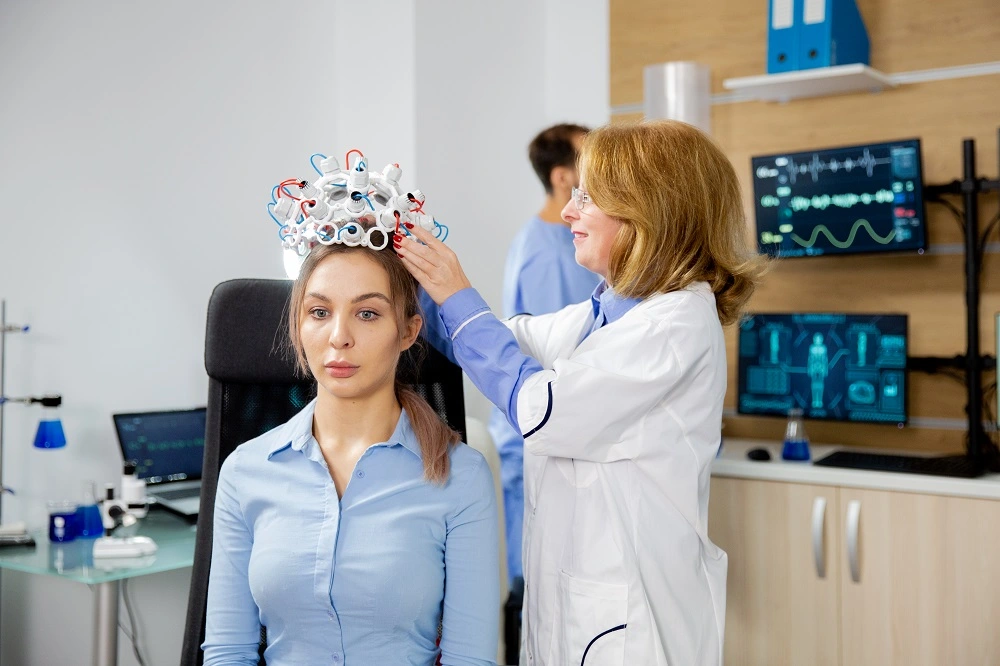Summary: Electroanalgesia using methods like TENS and PENS could be of use in chronic pain syndrome like neuropathic pain. Especially considering that pharmacological drugs often fail to help patients in such instances. However, it is vital to realize the limitations of electroanalgesia, as it might not provide sufficient relief in all cases. Moreover, certain highly invasive methods like DBS and SCS also carry certain risks.
Neuropathic pain is among the leading causes of chronic pain. Such kind of pains are especially becoming common due to the rise of metabolic disorders. Traditional painkillers provide little relief in such chronic pains. Hence, non-traditional methods like electroanalgesia might be an option.
However, when choosing these methods, there are a few challenges for doctors and patients alike. There are numerous such methods like transcutaneous electrical nerve stimulation (TENS), percutaneous electrical nerve stimulation (PENS), electroacupuncture (EA)j, and some highly invasive methods like deep brain stimulation (DBS) and spinal cord stimulation (SCS).

Figure 1 Various electroanalgesia methods (Image Source: Reddy, J., Singhal, R., Gaikwad, A. P., Patel, D., Patel, P., Gandhi, S. K., Reddy, J., Singhal, R., Gaikwad, A. P., Patel, D., Patel, P., & Gandhi, S. K. (2024). Unraveling the Potential of Electroanalgesia: A Literature Review of Current Therapeutics. Cureus, 16(5). https://doi.org/10.7759/cureus.61122)
Methods like TENS are non-invasive and do not require a doctor’s prescription, and such procedures can be carried out at home. Other methods, such as PENS and EA, are provided in clinics. Methods like DBS and SCS are reserved for specific cases since they are highly invasive.
However, the biggest challenge that doctors and patients face when deciding on managing chronic pain using such methods as electroanalgesia is that there are few reliable studies. Moreover, studies show mixed results. Hence, doctors and patients are unsure if the method can be of use for the specific case.
New Study Shows That Electroanalgesia Can Help, But There Is a Need for More Studies
The new study analyzed more than 600 research articles and included 56 clinical studies in the review. The study found that methods such as TENS, PENS, and EA have been shown to provide significant benefits in various pain conditions. For instance, TENS applied at acupoints can reduce postoperative pain and nausea and is as effective as ondansetron for preventing postoperative nausea and vomiting. TENS also decreases pelvic pain during minor procedures and improves chronic pain conditions like low back pain and knee osteoarthritis. Similarly, PENS and EA have shown effectiveness in both acute and chronic pain, including conditions like fibromyalgia and migraines.
The underlying mechanism of chronic neuropathic pain (NP) involves several pathways, including damage to peripheral nerves, central sensitization, neurotransmitter imbalances, inflammation, and maladaptive synaptic plasticity. These factors contribute to heightened pain sensitivity and chronic pain persistence. Communication between the nervous and immune systems and dysregulation of descending pain modulation pathways further complicates NP.
Electroanalgesia, using electrical stimulation for pain management, is indicated for various conditions, including acute and chronic pain, psychological pain, neurological disorders, musculoskeletal disorders, sports injuries, labor pain, palliative care, and dental procedures. Different electroanalgesia techniques target various nerves and conditions. For instance, TENS is used for many pain conditions, while SCS and DBS target specific neuropathic and chronic pain syndromes.
Among various electroanalgesia methods, TENS works by applying low-level electrical currents through skin electrodes, stimulating peripheral neurons, and modulating pain. On the other hand, PENS delivers electrical stimulation directly to the tissue, altering peripheral nerve activity and influencing the release of endogenous opioids. SCS stimulates the dorsal columns and lateral pathways, increasing endorphin levels and activating pain-inhibitory pathways. DBS involves implanting electrodes to deliver electrical currents to specific subcortical brain regions, reducing pain through neuromodulation. EA combines acupuncture with electrical stimulation, affecting multiple pathways and bioactive substances to block NP.
Alternate therapies, such as combining electrotherapy with pharmacological agents, have shown enhanced pain relief. Studies comparing treatments like TENS and PRF sympathectomy indicate both methods can reduce pain, although their effectiveness may vary over time. Exercise combined with TENS also provides significant pain reduction in conditions like diabetic peripheral neuropathy.
Adverse effects of electroanalgesia vary, with some methods being very safe and others more likely to cause side effects. TENS is pretty safe but not recommended for patients with pacemakers or epilepsy due to potential device interference. ST and DBS carry risks associated with surgical procedures, such as infection, hardware complications, and cognitive changes. SCS may involve surgical risks, lead migration, and equipment malfunctions.
Despite certain limitations, electroanalgesia remains a valuable approach for managing chronic NP, offering targeted pain relief and improved quality of life. However, it should be part of a comprehensive, multimodal pain management strategy tailored to individual patient needs.
Source:
Reddy, J., Singhal, R., Gaikwad, A. P., Patel, D., Patel, P., Gandhi, S. K., Reddy, J., Singhal, R., Gaikwad, A. P., Patel, D., Patel, P., & Gandhi, S. K. (2024). Unraveling the Potential of Electroanalgesia: A Literature Review of Current Therapeutics. Cureus, 16(5). https://doi.org/10.7759/cureus.61122




